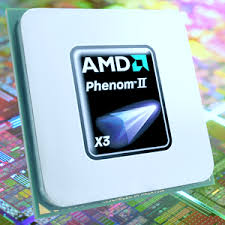Google believes almost religiously in cloud computing, the idea that computer applications and data live on the Internet rather than on PCs. But there are times when the network is inaccessible, and generally Web-based applications like today's Gmail effectively seize up under those circumstances.
Offline sidesteps that problem, the classic example being a busy executive traveling on a plane. And offline Gmail access begins a new chapter for Google's ambition to appeal to business customers for services such as Google Apps, of which Gmail is a component.
"This is a feature we've heard loud and clear the enterprise wants," said Todd Jackson, Gmail's product manager.
Trying to sign up business customers generally means wooing them away from the dominant e-mail products, Microsoft's Exchange server software and Outlook PC software. Google and Microsoft began in separate spheres, but are ever-closer competitive rivals, each with a strong cash-generating business that can be used to subsidize forays into other markets.
There's more, too. Google Apps customers will get another major offline option "soon," too: Google Calendar access, though not initially the ability to create new entries. If the organization's administrator enables the "New Features" option, each person within that organization will get access to the calendar, Google said.
Don't Miss
Latest CNET News videos
CNET News image galleries
More technology news from CNET
New features help make Gmail more compelling for business customers, but for many, a bigger problem is the fact that Gmail still sports its beta tag, said Gartner analyst David Smith.
"That's one of the biggest stumbling blocks for businesses," Smith said. "You're hard-pressed to find any businesses who decide to go into production with anything that a vendor calls beta, no matter how good it is." Google promises customers will get 99.9 percent availability through a service level agreement for Google Apps, which includes Gmail, Google Calendar, and Google Docs.
Cloud vs. PC
And Microsoft, while not turning on a dime, isn't counting on a future that consists exclusively of PC-based Office. It already has a product, Office Live Workspace that lets users share and view--but not edit--Office documents online, and the next version of Office will run in a browser.
Philosophically, though, Microsoft remains firmly tethered to the PC, while Google wants to move as fast as possible to Web-based applications.
"We think the browser is the ideal platform for deploying all kinds of applications. That's where Google is placing its bet," Jackson said. "But people are traditionally limited by the speed and connectivity of the Internet. We want to fill in those gaps."
Google already developed open-source technology called Gears that helps further this cloud computing agenda by storing Web data on PC, and Gmail, used by millions, could help coax more people to install Gears. That, in turn, could help solve the chicken-and-egg problem that currently means it's not worthwhile for most Web application programmers to build in Gears support.
Greater Gears support could help other cloud-computing companies, including Zoho, which already has offline access for its Web-based e-mail application.
It's not as if offline Gmail were completely impossible. People can set up software such as Outlook or Thunderbird to read and write e-mails, for example. But offline Gmail means people won't have to learn a new interface.
Offline Gmail has been in testing for months, though Jackson wouldn't share specifics about exactly how long.
What can offline Gmail do?
"We wanted the user experience to be almost identical to the experience you get when you're online," Jackson said.
Offline Gmail stores a copy of a user's inbox on a personal computer. Most people will have to install it, a process Google walks you through, but it's built into Google's Chrome browser.
Once Gears is installed and offline access is enabled, the software automatically detects when a person's network connection is working. If the network is good, Gmail works as usual. If it's bad, it goes into offline mode, sending unsent messages and retrieving new ones when the connection is restored.
And if the network is dodgy, a person can use the intermediate "flaky connection mode," which for example queues a message to be sent immediately by storing it to the hard drive then actually sends it as soon as it can. Google positions this as useful for coffee shops and poaching a neighbor's weak-signal wireless network, but I think of this as "tech conference mode."
When enabled, offline Gmail begins by downloading, in the background, a copy of a user's archive to the user's personal computer. But the software stores about 10,000 e-mails, so heavy users won't get a complete archive.
Gmail automatically updates the local cache of messages with new and recently read items and with messages associated with a particular label on which a person has clicked, Jackson said.
Imperfect
Not everything works, though.
One big missing piece is the ability to add attachments to new messages, though attachments are visible with existing messages.
Another is the contacts tab, so forget about managing e-mail lists or adding new addresses while offline. The autocomplete option works, though, so there's no need to start remembering e-mail addresses.
English-speaking Gmail users will be able to enable offline access as Google gradually adds the ability over the next "couple" of days, said Gmail engineer Andy Palay in a blog post. "Offline Gmail is still an early experimental feature, so don't be surprised if you run into some kinks that haven't been completely ironed out yet," Palay said.
What kinds of problems occur?
"We've seen issues with the local cache getting out of sync. You have to refresh the browser, and that gets you going again," Jackson said. "In some rare circumstance, it has to be fully flushed, so we ask to disable and re-enable the feature."
But these should be unusual problems, he said: "It's been in testing for awhile on all 20,000 Googlers, so it's gotten some good testing."
source: cnn.com
Read more...





